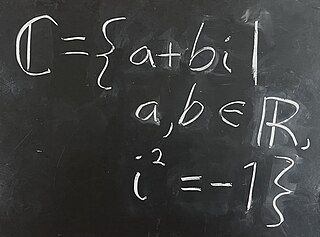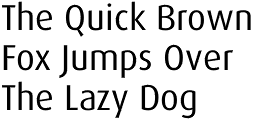D, or d, is the fourth letter in the Latin alphabet, used in the modern English alphabet, the alphabets of other western European languages and others worldwide. Its name in English is dee, plural dees.
K, or k, is the eleventh letter in the Latin alphabet, used in the modern English alphabet, the alphabets of other western European languages and others worldwide. Its name in English is kay, plural kays. The letter K usually represents the voiceless velar plosive.

QWERTY is a keyboard layout for Latin-script alphabets. The name comes from the order of the first six keys on the top left letter row of the keyboard. The QWERTY design is based on a layout created for the Sholes and Glidden typewriter and sold to E. Remington and Sons in 1873. It became popular with the success of the Remington No. 2 of 1878, and remains in ubiquitous use.

Z, or z, is the 26th and last letter of the Latin alphabet, as used in the modern English alphabet, the alphabets of other western European languages and others worldwide. Its usual names in English are zed and zee, with an occasional archaic variant izzard.

Blackboard bold is a style of writing bold symbols on a blackboard by doubling certain strokes, commonly used in mathematical lectures, and the derived style of typeface used in printed mathematical texts. The style is most commonly used to represent the number sets , (integers), , , and .
Although people in many parts of the world share common alphabets and numeral systems, styles of handwritten letterforms vary between individuals, and sometimes also vary systematically between regions.
A mathematical symbol is a figure or a combination of figures that is used to represent a mathematical object, an action on mathematical objects, a relation between mathematical objects, or for structuring the other symbols that occur in a formula. As formulas are entirely constituted with symbols of various types, many symbols are needed for expressing all mathematics.
Greek numerals, also known as Ionic, Ionian, Milesian, or Alexandrian numerals, are a system of writing numbers using the letters of the Greek alphabet. In modern Greece, they are still used for ordinal numbers and in contexts similar to those in which Roman numerals are still used in the Western world. For ordinary cardinal numbers, however, modern Greece uses Arabic numerals.
Omicron is the fifteenth letter of the Greek alphabet. This letter is derived from the Phoenician letter ayin: . In classical Greek, omicron represented the close-mid back rounded vowel IPA:[o] in contrast to omega which represented the open-mid back rounded vowel IPA:[ɔː] and the digraph ου which represented the long close-mid back rounded vowel IPA:[oː]. In modern Greek, both omicron and omega represent the mid back rounded vowel IPA:[o̞] or IPA:[ɔ̝]. Letters that arose from omicron include Roman O and Cyrillic O. The word literally means "little O" as opposed to "great O". In the system of Greek numerals, omicron has a value of 70.

Fraktur is a calligraphic hand of the Latin alphabet and any of several blackletter typefaces derived from this hand. Letters are designed such that the individual strokes are broken apart; in this way it is often contrasted with the curves of the Antiqua (common) typefaces where the letters are designed to flow and strokes connect together in a continuous fashion. The word "Fraktur" derives from Latin frāctūra, built from frāctus, passive participle of frangere, the same root as the English word "fracture".

The alphabet for Modern English is a Latin-script alphabet consisting of 26 letters, each having an upper- and lower-case form. The word alphabet is a compound of the first two letters of the Greek alphabet, alpha and beta. The alphabet originated around the 7th century to write Old English from Latin script. Since then, letters have been added or removed to give the current letters:
Alphabetical order is a system whereby character strings are placed in order based on the position of the characters in the conventional ordering of an alphabet. It is one of the methods of collation. In mathematics, a lexicographical order is the generalization of the alphabetical order to other data types, such as sequences of numbers or other ordered mathematical objects.
Base32 is the base-32 numeral system. It uses a set of 32 digits, each of which can be represented by 5 bits (25). One way to represent Base32 numbers in a human-readable way is by using a standard 32-character set, such as the twenty-two upper-case letters A–V and the digits 0-9. However, many other variations are used in different contexts.
Many letters of the Latin alphabet, both capital and small, are used in mathematics, science, and engineering to denote by convention specific or abstracted constants, variables of a certain type, units, multipliers, or physical entities. Certain letters, when combined with special formatting, take on special meaning.
Unicode has a certain amount of duplication of characters. These are pairs of single Unicode code points that are canonically equivalent. The reason for this are compatibility issues with legacy systems.
C, or c, is the third letter in the Latin alphabet, used in the modern English alphabet, the alphabets of other western European languages and others worldwide. Its name in English is cee, plural cees.
An aircraft seat map or seating chart is a diagram of the seat layout inside a passenger airliner. They are often published by airlines for informational purposes and are of use to passengers for selection of their seat at booking or check-in.

The Unicode Standard encodes almost all standard characters used in mathematics. Unicode Technical Report #25 provides comprehensive information about the character repertoire, their properties, and guidelines for implementation. Mathematical operators and symbols are in multiple Unicode blocks. Some of these blocks are dedicated to, or primarily contain, mathematical characters while others are a mix of mathematical and non-mathematical characters. This article covers all Unicode characters with a derived property of "Math".

A keyboard layout is any specific physical, visual or functional arrangement of the keys, legends, or key-meaning associations (respectively) of a computer keyboard, mobile phone, or other computer-controlled typographic keyboard.







